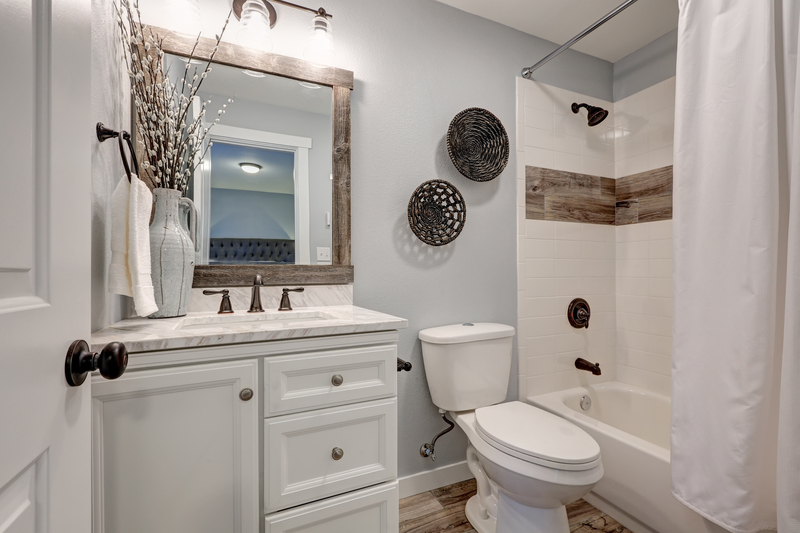Try these ideas for converting your tub to a shower for a more functional bathroom when space is at a premium.
There’s nothing quite like relaxing in a warm, bubbly bath to let your cares fade away, but having the time to take a bath can be a luxury itself. Showers are often quicker and more practical for daily life, which is why newly constructed or remodeled homes often include a shower in every full bath. If you live in an older house that hasn’t yet been updated, you might want to convert a standard bath into a shower unit. In that case, you’re likely facing a 5×8-foot space with a toilet, a small vanity, and a tub. This small bathroom layout doesn’t leave room to add a shower to the existing plan without blowing out some walls or reconfiguring the existing tub. To convert your tub to a shower, consider the following two options to make the best decision for your space.
Tear out the tub and build a new shower
One way to update a bathroom is to remove the existing bathtub and add a new shower unit. This is not a small job, so call a professional contractor to help you assess the space and potential solutions. In the footprint where the tub stands, you’ll likely have plenty of room to build a shower, but you’ll want to add a tile or solid surface curb to keep the water from spilling out into the bathroom.
When converting a tub to a shower, especially in a small space, consider how the shower door will factor into the layout. If you plan to have a shower door, make sure there is room for the door to swing open without hitting the toilet or sink. Shower doors aren’t required, however. A hanging curtain or a partial glass panel can also keep the water contained. Because these can let in cool air, make sure the room is warm and consider adding a heated floor to your shower. (Bonus: The heat will also keep the floor dry and reduce the possibility of slips.)
One downside to tearing out a tub and replacing it with a stand-alone shower is resale. Many homeowners want a tub for bathing children, particularly if the bathroom being remodeled is a shared family space. If this is the case, consider updating the bathtub instead of replacing it completely.
Photo: Adam Albright
Retrofit the plumbing to create a shower/tub unit
The less invasive solution is retrofitting the existing bathroom plumbing to create a combination shower-tub unit. This allows you to keep the original bathtub while adding the required plumbing for a shower. You’ll need to open up the wall (usually from the room adjacent to the bath) and ensure that the plumbing is up to code.
To waterproof the shower area, consider installing tile on the walls for a durable barrier. If the tub area includes a low window that might get wet, you might want to wall the window off and tile over it or replace it with glass blocks, which will stand up to water. Talk about other possible bathroom window solutions with your builder.
After converting a tub to a shower, you’ll need an enclosure, too. You can add sliding doors that mount to the top of the tub, but a less expensive and more decorative solution is to hang a shower curtain with a plastic liner. For shower curtain hardware, you can buy a tension-mount rod or a wall-mount rod, which could be straight or curved. Keep in mind that curved curtain rods can make the shower feel more spacious.
Regardless of which solution you choose, converting a tub to a shower presents opportunities to update the rest of the bathroom as well. Consider upgrading venting and bathroom lighting or building amenities that improve the experience, such as a bench, shelves, or a niche for soap and shampoo.
Kathy Barnes and Jessica Bennett, Better Homes & Gardens
